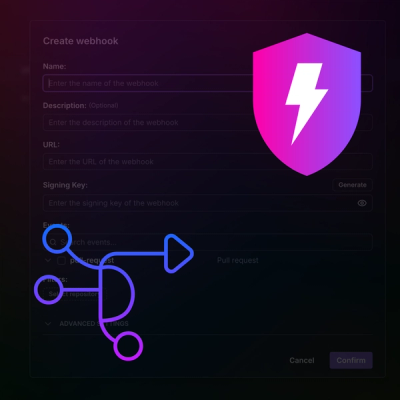
Product
Introducing Webhook Events for Pull Request Scans
Add real-time Socket webhook events to your workflows to automatically receive pull request scan results and security alerts in real time.
ember-cli-eslint
Advanced tools
Ember-cli eslint support, for checking your application matches your coding standards.
ESLint for Ember CLI apps and addons
ESLint 4 (for Node 4 and above):
ember install ember-cli-eslint@4
ESLint 3 (for Node 4 and above):
ember install ember-cli-eslint@3
ESLint 2 (for Node 0.10 and above):
ember install ember-cli-eslint@2
After installation, an .eslintrc.js file will be placed in both the root of
your project and the /tests directory.
Furthermore, a .eslintignore file can be used to exclude files from
linting while the linter is running. Its syntax is identical to
.gitignore files.
Congratulations! You've made the leap into the next generation of JavaScript
linting. At the moment, however, ember-cli defaults to generating
applications and addons with a jshint configuration.
As of ember-cli v.2.5.0,
jshint is provided through its own ember-cli-jshint addon.
Running npm uninstall --save-dev ember-cli-jshint, in addition to removing
any .jshintrc files from your project should guarantee that its behavior
is disabled.
Controlling linting is a bit trickier on versions of ember-cli prior to
2.5.0. Within your ember-cli-build.js file, ember-cli-qunit or
ember-cli-mocha can be configured to have their default linting process
disabled during:
module.exports = function(defaults) {
const app = new EmberApp(defaults, {
'ember-cli-qunit': {
useLintTree: false
}
});
};
or
module.exports = function(defaults) {
const app = new EmberApp(defaults, {
'ember-cli-mocha': {
useLintTree: false
}
});
};
Alongside this setting, the hinting property can then be used to
enable/disable globally:
const isTesting = process.env.EMBER_ENV === 'test';
module.exports = function(defaults) {
const app = new EmberApp(defaults, {
hinting: !isTesting,
});
};
ESLint will be run by ember-cli-qunit or ember-cli-mocha automatically
when you run ember test. If ESLint is not being run automatically, try
updating your ember-cli and/or ember-cli-qunit/ember-cli-mocha
dependencies.
ember-cli-eslint can be configured through the eslint key in your
ember-cli-build.js file:
let app = new EmberApp(defaults, {
eslint: {
testGenerator: 'qunit',
group: true,
rulesDir: 'eslint-rules',
extensions: ['js'],
}
});
testGenerator is automatically detected if ember-qunit/ember-cli-qunit
or ember-mocha/ember-cli-mocha are used, but can also be set to qunit
and mocha manually.
group can be set to false to go back to the previous behavior where
every generated test was contained in its own separate module.
rulesDir is the name of the directory for your custom eslint rules.
It defaults to eslint-rules.
extensions is an array containing the file extensions to lint. If you want to lint JavaScript and TypeScript files for example it should be set to ['js', 'ts']. NOTE: If you add Typescript files typescript-eslint-parser has to be installed and specified as the parser. For more information take a look at the typescript-eslint-parser
Please note that if you are using this to lint files which are part of the build
process (ie. index.js, ember-cli-build.js, config/), whether in an application or
as part of an addon, they will not be linted. It is recommended that eslint is
setup separately to lint these files and can be setup as an npm script and run as
part of a CI process.
git clone this repositorycd ember-cli-eslintnpm installbower installember servernpm test (Runs ember try:testall to test your addon against multiple Ember versions)ember testember test --serverember try:eachnpm run lint:hbsnpm run lint:jsnpm run lint:js -- --fixember serveFor more information on using ember-cli, visit https://ember-cli.com/.
This project is licensed under the MIT License.
FAQs
Ember-cli eslint support, for checking your application matches your coding standards.
We found that ember-cli-eslint demonstrated a not healthy version release cadence and project activity because the last version was released a year ago. It has 5 open source maintainers collaborating on the project.
Did you know?

Socket for GitHub automatically highlights issues in each pull request and monitors the health of all your open source dependencies. Discover the contents of your packages and block harmful activity before you install or update your dependencies.

Product
Add real-time Socket webhook events to your workflows to automatically receive pull request scan results and security alerts in real time.

Research
The Socket Threat Research Team uncovered malicious NuGet packages typosquatting the popular Nethereum project to steal wallet keys.

Product
A single platform for static analysis, secrets detection, container scanning, and CVE checks—built on trusted open source tools, ready to run out of the box.